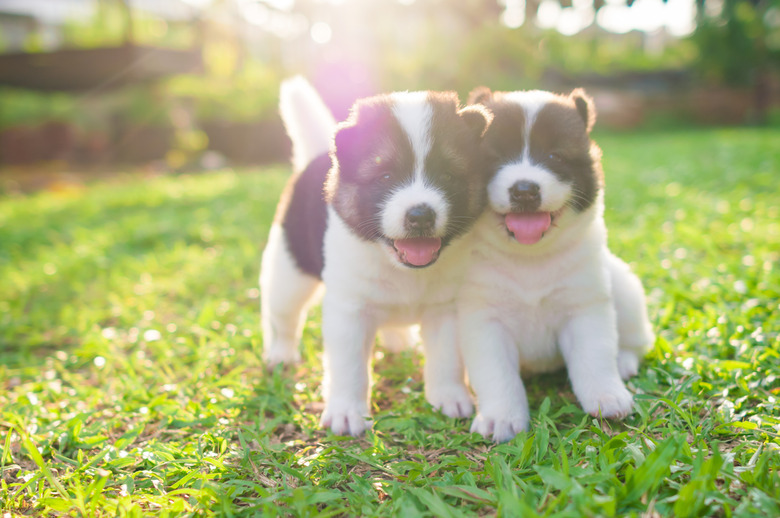What Determines Puppy Litter Size?
It's relatively quiet in your house right now, but in just a short time you'll hear the pitter patter of puppy feet, and your house will explode with canine activity. While you're wondering just how many puppies you can expect, the fact is that there's no surefire way to know until not long before the birth. when your vet can perform an X-ray revealing the magic number. However, some factors influence dog litter size, and from them, you can estimate a puppy ballpark number. Whether you have just a few puppies or quite a few, make sure to enjoy every minute of the experience.
Breed and litter size
Breed and litter size
A dog's breed dramatically influences litter size. The American Kennel Club notes that Labrador and golden retrievers, the nation's first and second most popular dog breeds, have an average of seven puppies per litter. Labs and goldens are relatively large dogs. The tiny Yorkshire terrier, seventh in overall popularity, averages just three puppies per litter.
That example tends to hold true when it comes to dog breed size. Little dogs have small litters, medium-sized dogs have mid-size litters, and big dogs tend toward large litters. A Norwegian Kennel Club study conducted in 2006 and 2007 bears this out.
In the study, the flat-coated retriever, a relative of the Lab, had the largest average litter size, at just over seven pups, with the German shepherd coming in a very close second. Tiny dogs like the Norfolk terrier, Pomeranian, and the toy poodle had the smallest average litters, at just three pups.
Maternal age
Maternal age
The age of the mom plays a role in litter size, so the number of offspring a dog may produce per litter may change over the years. Young and old dogs have small litters, while females in their prime have more puppies. The male also plays a part. Sperm quality declines with age, so female dogs in their prime bred to an older male may have fewer puppies than if they were bred to a younger dog.
Maternal health
Maternal health
An unhealthy dog should never be bred. However, plenty of females in poor health or kept in poor conditions will have pregnancies unplanned by people. A female who is in less than good condition at the time of mating and during the pregnancy will usually have fewer puppies than a similar, healthy female.
Breeding dates
Breeding dates
When a dog is bred may also affect litter size. A female dog bred by natural cover or artificial insemination may have a larger litter if the breeding takes place within 48 hours of ovulation, according to Whelping Puppies. However, if frozen rather than fresh semen is used for artificial insemination, the best time for breeding for litter size is three-to-four days post-ovulation. Determining the exact time of ovulation requires the measurement of the mom-to-be's progesterone levels.
Overall, litters conceived naturally rather than via artificial insemination tend toward the larger. The way semen is artificially inseminated also plays a role. If the semen is deposited directly into the uterus, an average of 1.4 more pups are born per litter than if the semen is deposited into the vagina.
Accurate determination
Accurate determination
The only way you can tell how many puppies to expect before delivery is via X-ray, but such an X-ray isn't accurate until just a few days before the puppies are born. The University of Missouri extension notes that fetal teeth, a good indicator of the number of puppies, aren't visible on an X-ray until days 51-to-66 after breeding, but whelping occurs between days 57-to-69. That means you have about a week before the due date to bring your very pregnant dog to the vet for such an X-ray. Although the X-ray can give you a reasonable estimate of the number of puppies to expect, it can't account for a pup — or two — hiding beneath a sibling when the X-ray is taken.
Always check with your veterinarian before changing your pet's diet, medication, or physical activity routines. This information is not a substitute for a vet's opinion.

